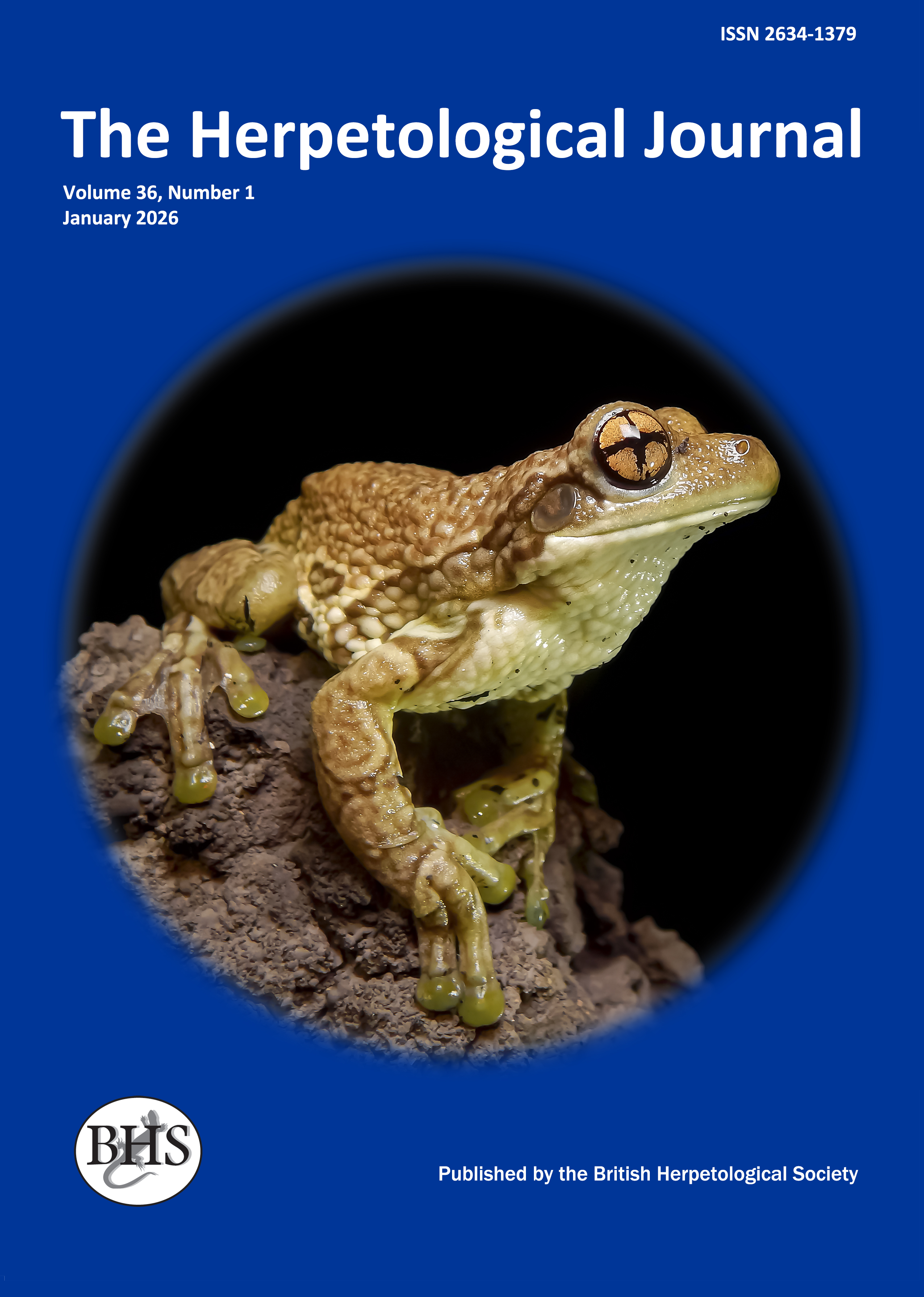
The Herpetological Journal
The Herpetological Journal is the Society's prestigious quarterly scientific journal. Articles are listed in Biological Abstracts, Current Awareness in Biological Sciences,Current Contents, Science Citation Index, and Zoological Record.
ISSN 0268-0130
2023 Impact Factor for the Herpetological Journal is 1.1, with the Journal sitting just below Quartile 2 in Zoology, at percentile 46.9
pdf 09. The role of relief in local abundance patterns of the spur-thighed tortoise Testudo graeca graeca in south-east Spain
1686 downloads
Open Access
pp. 285-290
Authors: Anadón, J. D.; Giménez, A.; Pérez, I.; Martínez, M. & Esteve, M. A.
Abstract: We searched for patterns in the local abundance of Testudo graeca graeca with respect to relief characteristics in south-east Spain. The detection of tortoises during linear transects, in sampling plots and through fortuitous observations was used to examine distribution in relation to aspect and to topographic position at two different local scales. Both aspect and run-off gradients produced spatial patterns in the local abundance of T. g. graeca. These patterns are discussed with regard to the key conditions and resources for the species (solar radiation, food and nesting sites). At both scales tortoises were more abundant on north-west facing slopes, where solar radiation levels are assumed to be moderate to high, and where there are probably plenty of food resources. The apparent avoidance of north-east facing slopes, despite an abundance of food, suggests that tortoises may not be able to thermoregulate adequately in these areas and that thermoregulation may be the most important requirement for the species. Valley bottoms, mainly occupied by non-irrigated crops, were also selected. Therefore, our results suggest that there is a spatially aggregated population structure at a local scale that is caused by factors associated with relief.
Keywords: TOPOGRAPHY, ECOLOGY, ASPECT GRADIENT, RUN-OFF GRADIENT, CHELONIA

